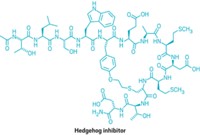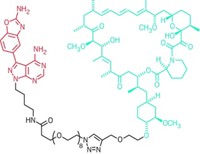Advertisement
Grab your lab coat. Let's get started
Welcome!
Welcome!
Create an account below to get 6 C&EN articles per month, receive newsletters and more - all free.
It seems this is your first time logging in online. Please enter the following information to continue.
As an ACS member you automatically get access to this site. All we need is few more details to create your reading experience.
Not you? Sign in with a different account.
Not you? Sign in with a different account.
ERROR 1
ERROR 1
ERROR 2
ERROR 2
ERROR 2
ERROR 2
ERROR 2
Password and Confirm password must match.
If you have an ACS member number, please enter it here so we can link this account to your membership. (optional)
ERROR 2
ACS values your privacy. By submitting your information, you are gaining access to C&EN and subscribing to our weekly newsletter. We use the information you provide to make your reading experience better, and we will never sell your data to third party members.
Biological Chemistry
Trivalent PROTACs speed up protein degradation
New degraders work over broader concentration range than previous ones
by Celia Henry Arnaud
October 27, 2021
| A version of this story appeared in
Volume 99, Issue 40

Targeted degradation of proteins in the cell has the potential to be useful in treating disease or as a research tool. A class of protein degraders that has attracted significant research interest because of its ability to degrade a variety of proteins is known as proteolysis-targeting chimeras, or PROTACs. These molecules typically consist of two ligands. One ligand binds the targeted protein, and the other ligand binds an enzyme that adds the protein ubiquitin to the target protein as a signal to the cell that the protein is slated for degradation. The PROTAC brings the target protein and the enzyme close enough for the enzyme to do its job.
A new study reports PROTACs with three ligands, two that can bind sites on the target protein and one that binds the enzyme. The new trivalent PROTACs achieve protein degradation at lower concentrations than conventional bivalent PROTACs (Nat. Chem. Biol. 2021, DOI: 10.1038/s41589-021-00878-4).

Successful tagging of a target for degradation is “not just about the proximity,” says Alessio Ciulli of the University of Dundee, one of the leaders of the new study. The orientation and stability of the PROTAC complex is also important, he says. Having three binding sites strengthens the interactions. The extra binding site might also help hold the target protein in a conformation that is more favorable for ubiquitination, says Danette L. Daniels, an R&D group leader at Promega Corporation who also led the research.
The researchers chose a model system for which bivalent PROTACs and inhibitors have already been reported.
The researchers made six trivalent PROTACs, which each consisted of a 1,1,1-tris(hydroxymethyl) ethane core connected to each of the ligands through polyethylene glycol (PEG) chains. The PROTACs differed in their PEG chain lengths and in which ligand bound the ubiquitin-adding enzyme.
The best of the trivalent PROTACs, called SIM1, degraded the target protein over a wider range of concentrations, both lower and higher, than bivalent PROTACs do. Often, at high concentrations, bivalent PROTACs stop degrading their target. SIM1 degraded its target at concentrations as low as 10 pM and as high as 30 µM.
The work is “a significant advance,” says Lyn Jones, the director of the Center for Protein Degradation at the Dana-Farber Cancer Institute, who was not involved in the study. “The study establishes a proof-of-concept for improved efficacy and selectivity driven by increased valency. The trivalent PROTAC has surprisingly good activity and favorable [pharmacokinetics]. The next step will be to develop an orally bioavailable degrader and a heterotrivalent compound that induces the proximity of three different biomolecules.”





Join the conversation
Contact the reporter
Submit a Letter to the Editor for publication
Engage with us on Twitter